Case Studies > General Simulation
Innovative Performance Strategies: Insights from Simulation Analysis
| About | An evaluation of an architectural designs' environmental performance through simulations, analyzing thermal comfort, daylighting, and ventilation to inform sustainable building practices. | 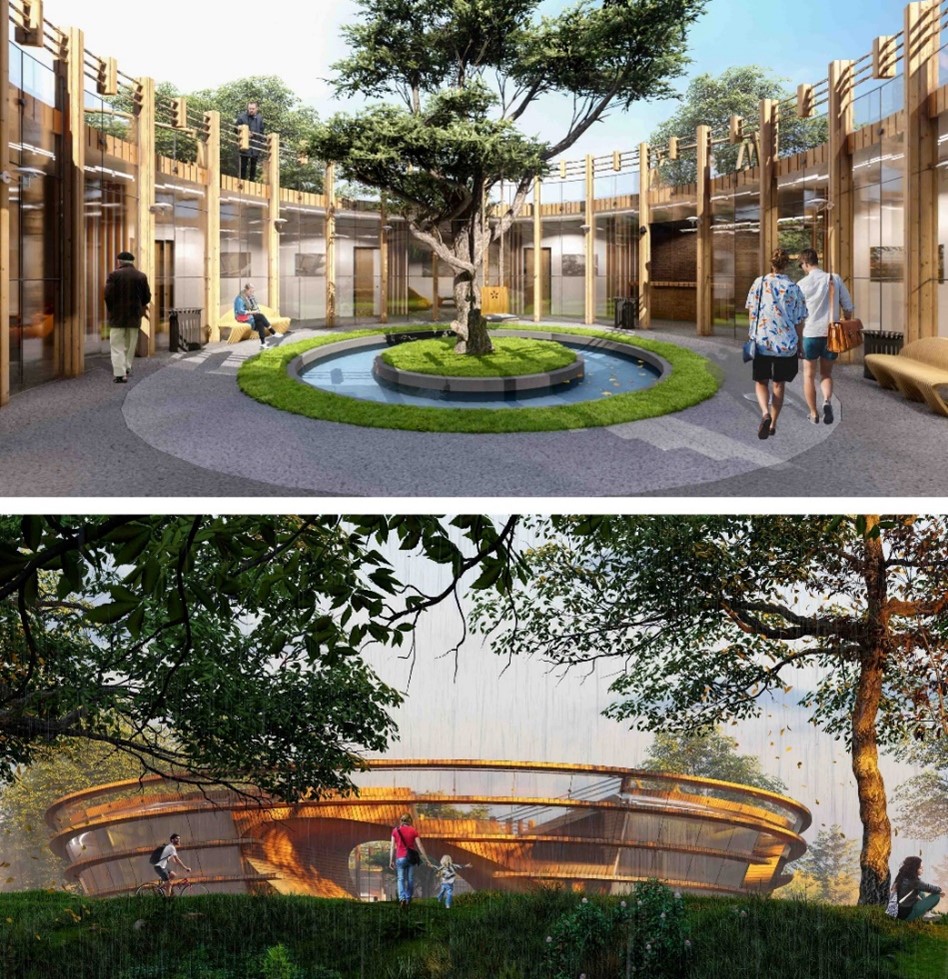 |
| By | Mohamed Ali, Virginia Tech, Blacksburg, VA, USA | |
| Location | Blacksburg, Virginia, USA | |
| Category | Passive Performance Strategies, Adaptive Retrofitting, Daylighting and Visual Comfort, Shadow and Solar Performance Analysis, Natural Ventilation and Airflow Optimization | |
| Highlights |
|
Introduction
This project aims to deliver a sustainable and environmentally responsive building in Blacksburg, VA, USA by integrating passive design strategies with thoughtful architectural form. The cylindrical layout reduces harsh edges and encourages natural airflow, while courtyards and glass walls frame outdoor views and maximize daylight. Shading devices, angled 60° walls, and lowered rooflines reduce heat gain and support passive cooling. A central courtyard functions as a microclimate zone, using water features, grass, gravel, and trees to promote evaporative cooling and ventilation. The design also incorporates rainwater collection and natural materials such as stone and wood to enhance environmental performance and user comfort. DesignBuilder was used to assess airflow and thermal behavior, ensuring energy efficiency and year-round comfort.
 Figure 1. Conceptual design highlights key sustainability features.
Figure 1. Conceptual design highlights key sustainability features.Material selection focused on sustainability and performance, emphasizing natural elements such as stone, wood, gravel and clear glass for transparency. Thermal properties, including U-values and solar heat gain coefficients, were evaluated to optimize energy efficiency and indoor comfort. Acoustic performance and tactile qualities were also considered to ensure a harmonious and sustainable integration of materials within the design. Grass and gravel within the courtyard enhanced the connection to the natural environment, promoting both aesthetic and functional benefits.
Building façade summary:
| Glazing type | Double Low-e with thermally broken frames. |
| Glazing Properties | Total Solar Transmission (0.59), Visible Transmittance (0.76), U-Value: 1.48 (W/m²·K) |
| Window to wall ratio | 32% |
| External Shading | Thermally Modified Wood with R-Value = 0.21 m²·K/W |
| Walls | Glass Construction with R-value = 2.1 m²·K/W |
| Roof | Wood Joist Construction system with R-Value = 4.875 m²·K/W |
Methodology
The project employed advanced simulation techniques to assess key aspects of sustainable design performance. An energy model was created by defining the building into separate zones, each representing distinct functional and environmental characteristics. The model was created inside DesignBuilder software as "zones," then secondary details such as shading devices were added as "component blocks". Additionally, all windows were modeled with 65% airflow efficiency, accounting for a 10% frame and 25% bug screen obstruction to provide the most accurate representation of reality. These methods provided comprehensive insights into thermal comfort, daylighting, shadow analysis, and natural ventilation.
Environmental analysis
To ensure the building design aligns with the local climate conditions, a comprehensive climate analysis was conducted using Climate Consultant software. This analysis identified possible heating and cooling strategies required to maintain indoor comfort throughout the year. The findings emphasize the need for targeted solutions based on seasonal variations, optimizing both energy efficiency and occupant comfort. It also improves CFD accuracy by providing precise climate inputs such as wind speed, direction and temperature, ensuring realistic airflow and thermal simulations.
The wind analysis for Blacksburg, VA, reveals that the highest recorded wind speeds reach approximately 30-35 mph, (48-56 km/h) predominantly occurring in the winter months, as shown in the wind velocity chart. The average wind speeds range between 3-15 mph, (5-24 Km/h) throughout the year, with a notable increase during December and January. The wind rose indicates that the northwestern direction is dominant. These values emphasize the need for design strategies that capitalize on natural ventilation from northwestern winds.
The dry bulb temperature analysis for Blacksburg, VA, shows a significant seasonal variation, with recorded highs reaching approximately 90°F (32°C) during the summer months of July and August and lows dropping below 20°F (-7°C) in winter, particularly in January. The annual average temperatures range from about 30°F (-1°C) in the winter to 75°F (24°C) in the summer.
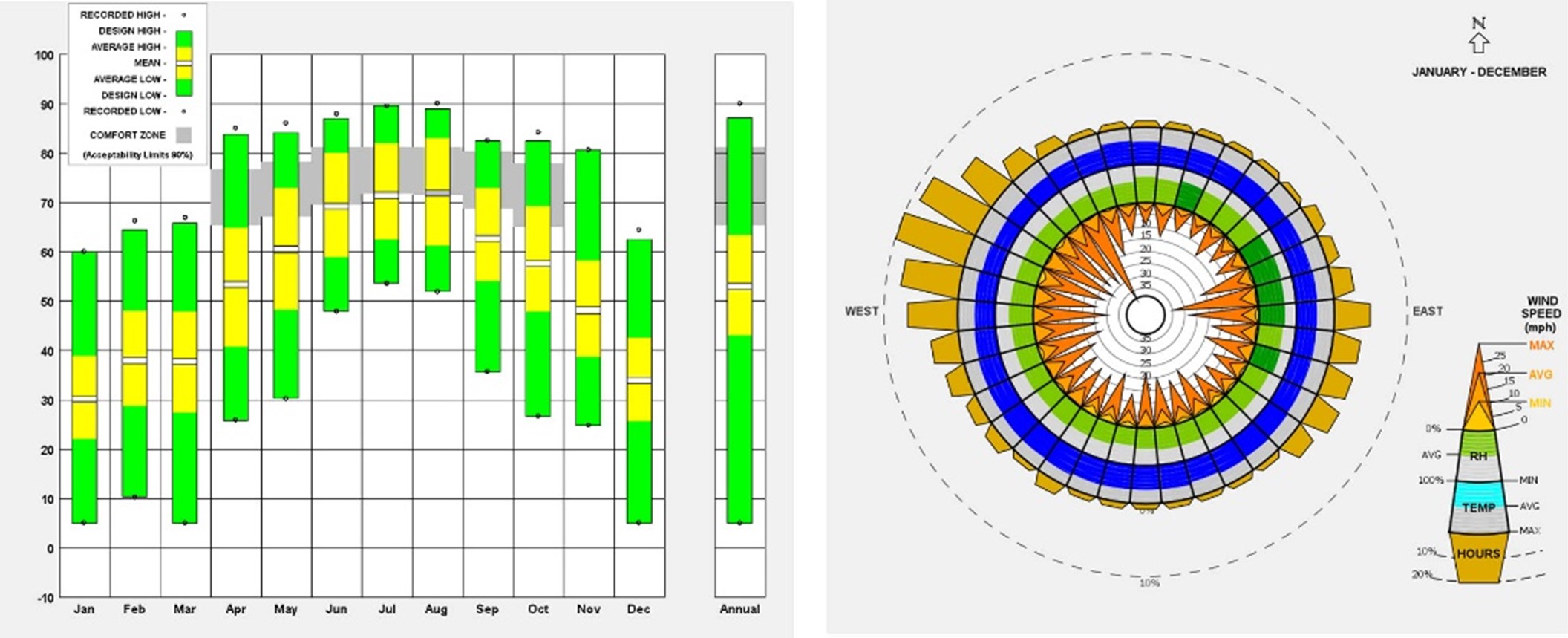
Figure 2 Left: monthly dry-bulb temperature, middle: wind rose, right: psychometric chart
Thermal Comfort
Thermal comfort was evaluated using the PMV and PPD indices across seasonal configurations to ensure optimal indoor conditions throughout the year. The analyses revealed significant temperature and humidity variations between summer and winter, necessitating adaptive strategies. To accurately assess thermal comfort, the evaluation incorporated specific input parameters, including a metabolic value of 0.90, a summer clothing insulation level of 0.50 clo, and a winter clothing insulation level of 1.00 clo. These values reflect typical occupant activity and attire across different seasons, ensuring precise comfort predictions. Passive solar shading and stack ventilation emerged as effective solutions for maintaining thermal stability, reducing energy consumption, and enhancing occupant comfort.
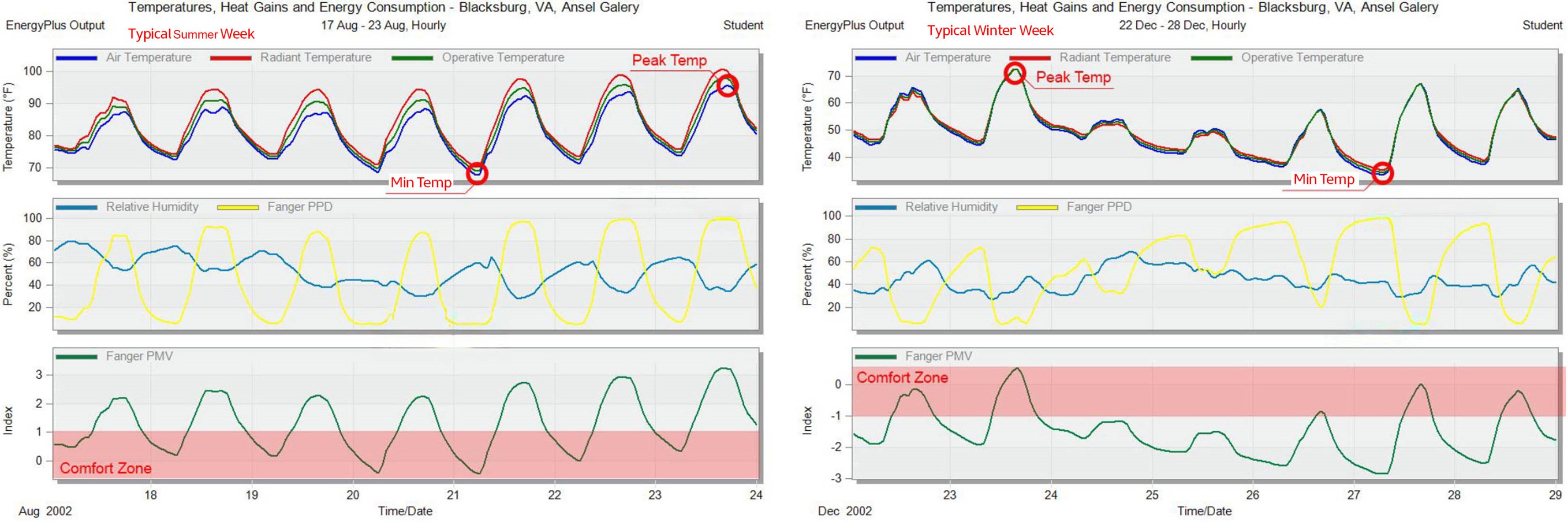
Figure 3. Hourly air temperature and comfort variations for typical summer and winter weeks.
Daylighting
Daylighting simulations demonstrated an sDA 300/50% value of 62.9%, exceeding the LEED threshold for daylight autonomy and earning exemplary performance credits. Strategic openings and large glazing areas were optimized to enhance natural light penetration while minimizing glare. Shading devices were meticulously designed to balance light control with energy efficiency, drawing inspiration from the surrounding context to integrate seamlessly into the architectural form.
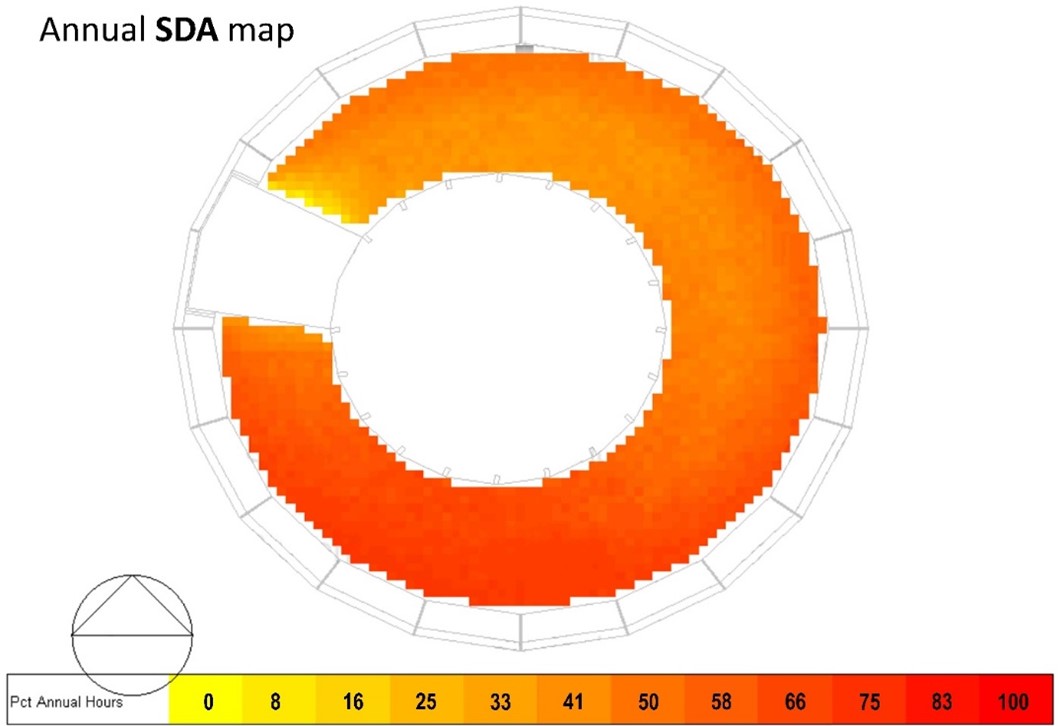
Figure 4. Annual results for Spatial Daylight Autonomy (SDA) from DesignBuilder
Visual Shadow Analysis
DesignBuilder Visualisation was used to evaluate the seasonal behavior of shadows within the building to provide an indication of the impact of solar heat gain on thermal comfort. The placement of trees and vertical shading devices within the courtyard reduced solar exposure during peak hours, mitigating overheating risks. Simulation findings informed refinements in shading device dimensions and spacing, ensuring maximum coverage and efficiency during both summer and winter months.
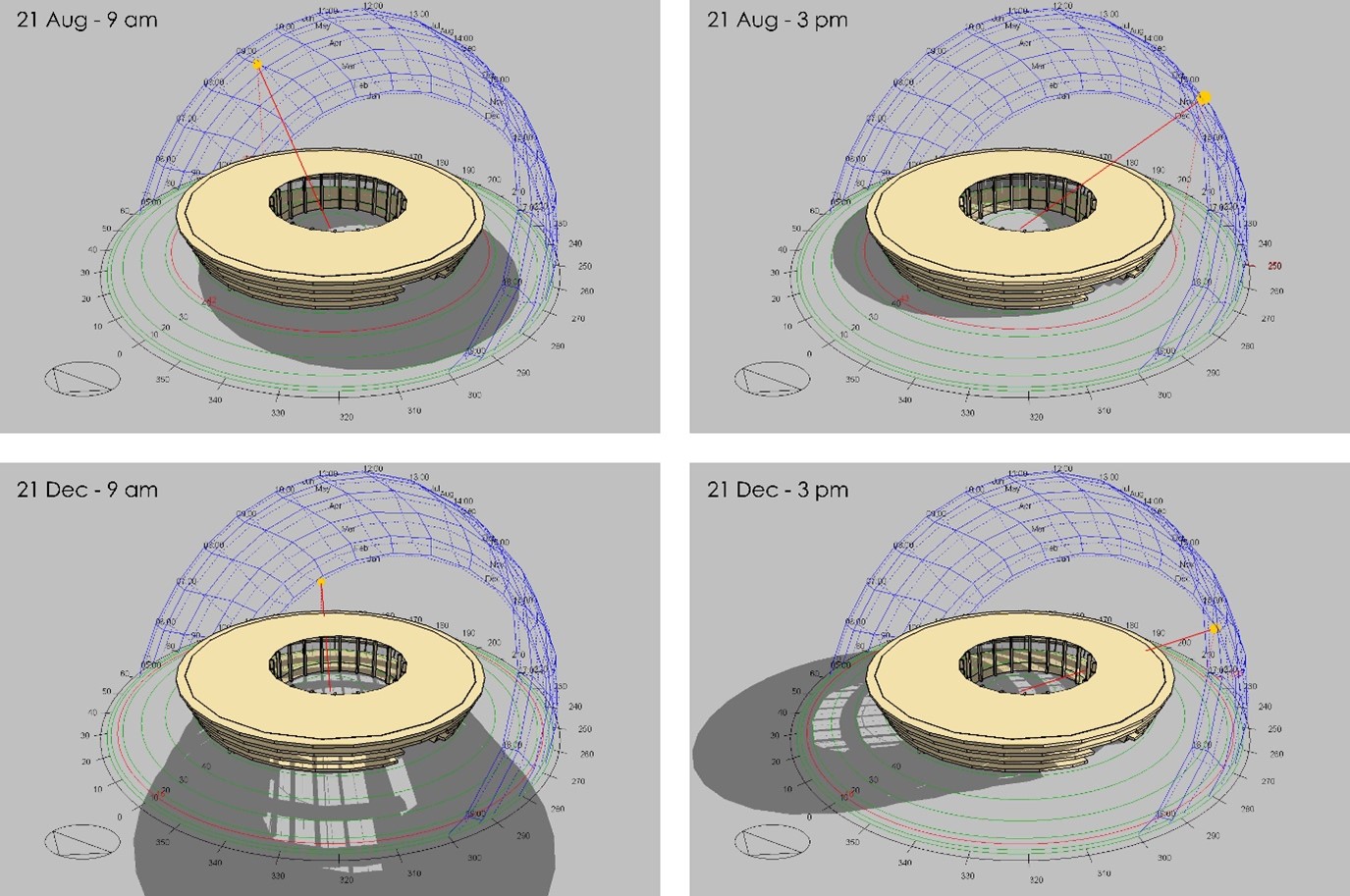
Figure 5. Shadow analysis was performed at 9:00 AM and 3:00 PM during August and December using DesignBuilder.
Natural Ventilation
External CFD – Wind analysis
An external CFD analysis considered suburban surroundings and examined airflow patterns influenced by wind direction, velocity, and courtyard geometry. August 22 at 3:00 PM (summer) and December 22 at 3:00 PM (winter) were selected based on peak seasonal wind patterns and thermal conditions identified using Climate Consultant. These dates represent periods with significant outdoor discomfort due to high summer temperatures and strong winter winds, making them suitable for evaluating the courtyard's environmental performance.
On August 22, with an incoming air temperature of 34.6°C, northwestern winds reached 14 km/h, while courtyard wind speeds ranged from 3.1 km/h to 9.3 km/h, enhancing cooling. On December 22, with an incoming air temperature of 16.5°C, winds shifted westward, increasing to 37.5 km/h externally and 5.6–22.5 km/h in the courtyard, requiring vegetation to reduce wind penetration. Courtyard design and vegetation effectively moderated wind impacts, improving winter comfort, while additional vegetation was recommended for summer cooling.
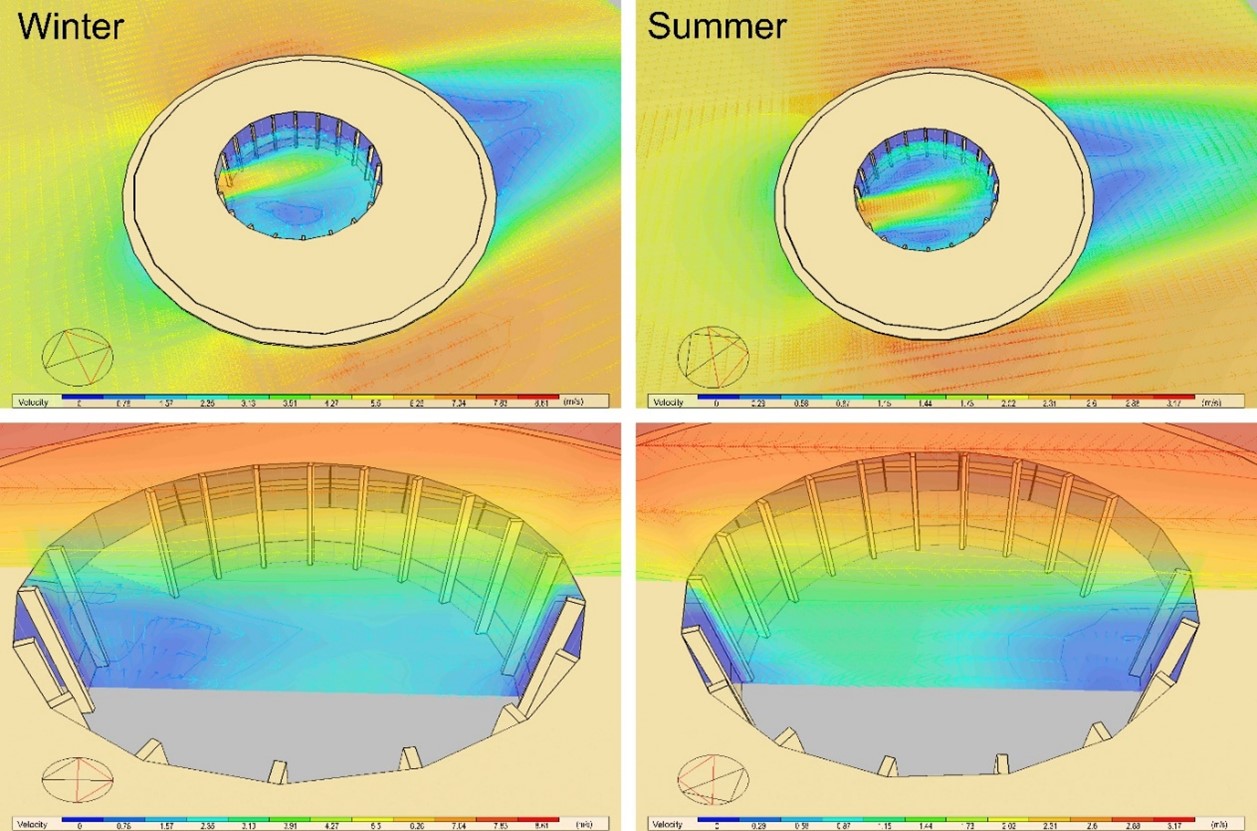
Figure 6. This figure shows External CFD analysis for 22 August at 3 PM and 22 December at 3 PM.
Internal CFD
On August 22 at 3 PM (summer), with an incoming air temperature of 34.6°C, internal wind velocities ranged from 2.0 km/h (1.25 mph) to 5.6 km/h (3.50 mph). On December 22 at 3 PM (winter), with an incoming air temperature of 16.5°C, internal wind velocities varied between 2.9 km/h (1.80 mph) and 13.7 km/h (8.50 mph). These variations highlight the influence of the stack effect on airflow within the interior spaces, as the greater temperature differential between indoor and outdoor air in winter increases buoyancy-driven flow, resulting in higher internal air movement compared to summer.
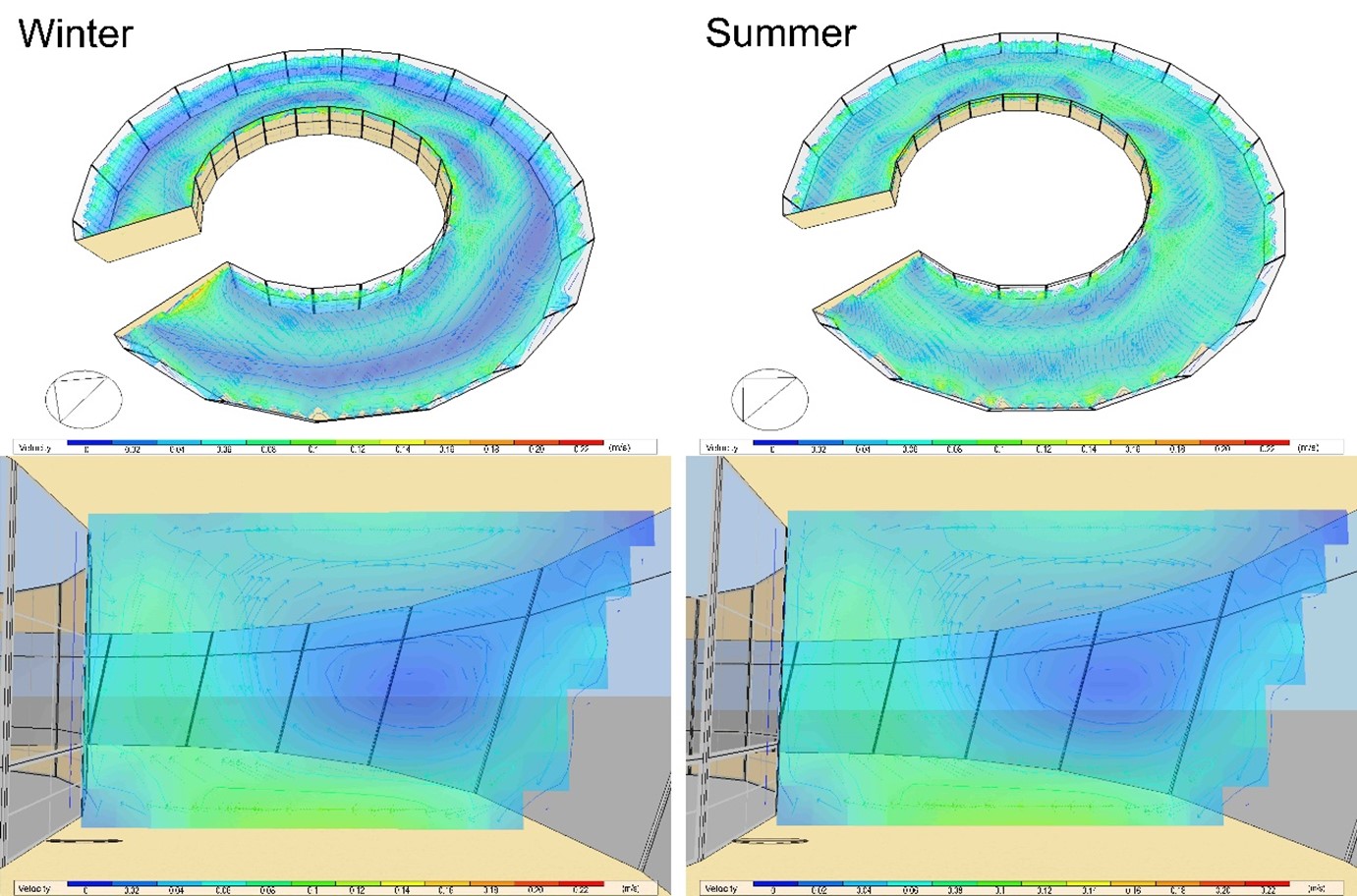
Figure 7. This figure shows internal CFD analysis for 22 August at 3 PM and 22 December at 3 PM.
Conclusion
This case study demonstrates the role of simulation-based analysis in validating sustainable design strategies. Using DesignBuilder, the study evaluated environmental performance, thermal comfort, daylighting, and natural ventilation through a series of seasonal simulations.
Environmental performance simulations confirmed that the courtyard, shading devices, and vegetation effectively reduced solar heat gain and improved outdoor thermal conditions. CFD analysis supported these findings, showing moderated wind flow and temperature across seasonal extremes.
Thermal comfort simulations using PMV indicated acceptable comfort across most spaces, with minor overheating detected in some zones during the summer, suggesting a need for more adaptive shading or ventilation.
Daylighting analysis showed that 62.9% of regularly occupied areas achieved sDA 300/50%, exceeding the LEED threshold and indicating strong daylight access with controlled glare potential.
Natural ventilation results revealed that winter airflow benefited significantly from the stack effect, while summer ventilation was moderate, indicating opportunities for further improvement through operable openings or vegetation.
The integration of courtyard-based strategies and passive cooling techniques effectively supported energy-efficient performance across the seasons. However, the simulations also identified areas requiring refinement, particularly in addressing uneven airflow and localized overheating. Overall, this work emphasizes the importance of early-stage simulation in guiding design decisions, validating environmental strategies, and improving building performance outcomes.
About the authors |
|
 |
Mohamed Ali is a Ph.D. student in Architecture and Design Research at Virginia Tech. His research centers on the integration of Building Performance Simulation (BPS) and Virtual Reality (VR) to advance immersive environmental analysis and architectural visualization. He is particularly interested in the application of simulation technologies to the study of historical and vernacular architecture, with a focus on enhancing spatial understanding, sustainability, and user experience. His work explores innovative strategies for net-zero design and the use of eco-friendly materials, including 3D printing with clay and salt. Mohamed is also engaged in digital cultural heritage, aiming to preserve and interpret traditional architectural forms through interactive, research-driven virtual environments. Contact: mohamedelshahat1999@gmail.com; LinkedIn: www.linkedin.com/in/mohamed-ali-1b1b232a2 |
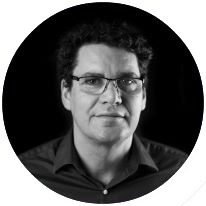 |
Clive Vorster is a instructor Virginia Tech. He has taught in the College of Architecture, Arts and Design since 1998. He has taught both industrial design and Architecture studios, both graduate and undergraduate levels. He has taught multiple professional elective courses specializing in the interrelationship between Material, Process and Form. His teaching and research has lead him to innovative Design Build projects, furniture and Lighting design. He believes that it is essential to the exposure of students to making and is thus involved in many multidisciplinary full-scale research projects. In collaboration with the School of Architecture's Center for Design Research, he has participated in interdisciplinary projects which include the 2009, 2010 and 2018 Solar Decathlon house and the Rivere Ecological Center for the Rappahannock river. Contact: cvorster@vt.edu |
 |
Jim Jones is a Professor in the School of Architecture and directs the Center for High Performance Environments and oversees the Design Research stream of the PhD Program. Under his supervision the Center for High Performance Environments has been recognized as a Center of Excellence by the U.S. Department of Energy. Jim has a Masters of Architecture and Ph.D. from the College of Architecture and Urban Planning at the University of Michigan. He has conducted research related to design decision-making and building performance for over thirty years and has been recognized as a National Merit Scholar by the U.S. Environmental Protection Agency. Dr. Jones has advised over 25 PhD students, 30 Master of Science and over 100 undergraduate and graduate design thesis projects. Dr. Jones has over 100 publications in books, invited book chapters and conference proceedings, and has been the Principal Investigator for over $2 million in funded research. Contact: jajone10@vt.edu; LinkedIn: https://www.linkedin.com/in/jim-jones-7469301a |
